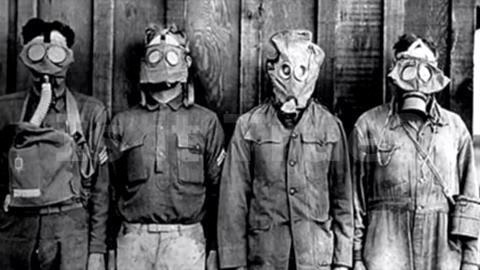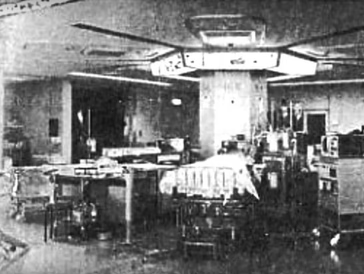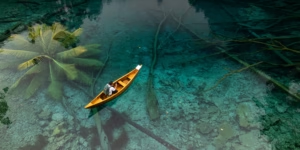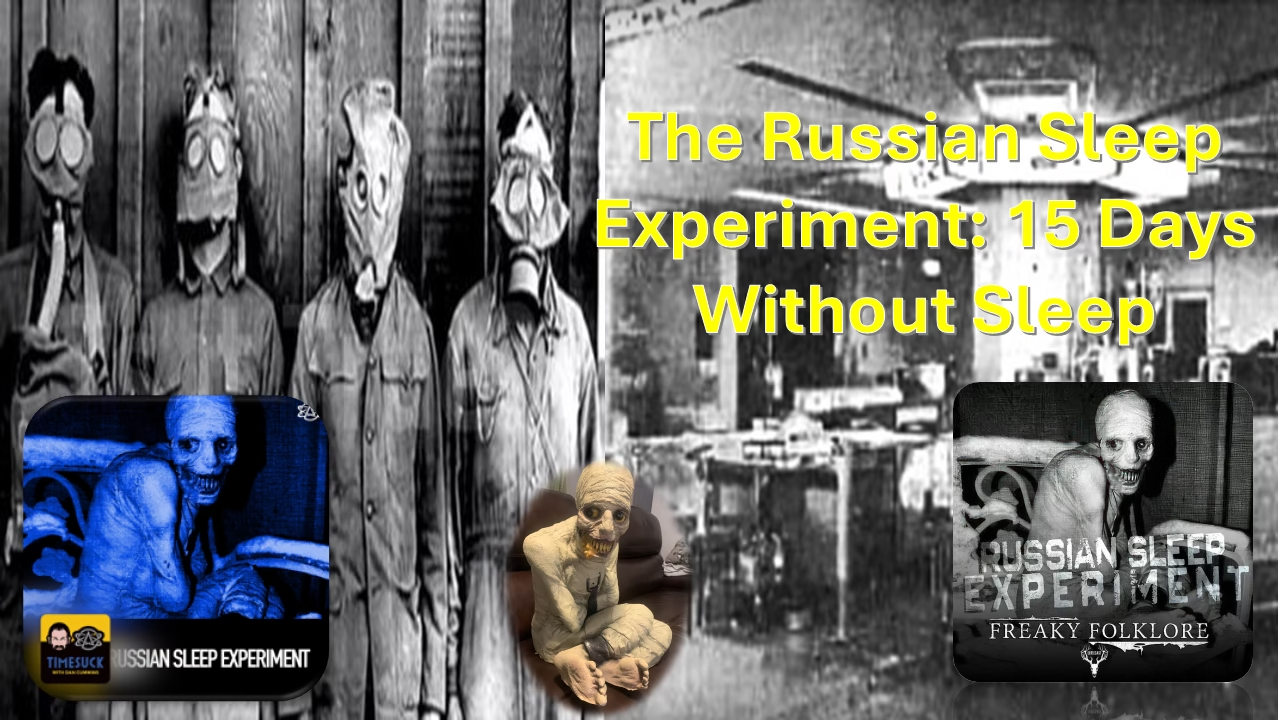
Among the many unsettling legends circulating on the internet, few have captured the imagination and fear of readers quite like The Russian Sleep Experiment. Allegedly conducted during the late 1940s, this sinister tale speaks of a group of Russian political prisoners subjected to an unthinkable scientific trial: fifteen days without sleep, kept awake by an experimental gas. While the story is widely believed to be a work of fiction, originating from the Creepypasta internet folklore, its disturbing content and psychological depth have earned it a place in modern horror culture.
But beyond the sensationalism lies a deeper question: What happens to the human mind and body when deprived of sleep? Could such an experiment be grounded in any scientific plausibility? What makes the Russian Sleep Experiment so haunting, and why has it endured as an urban legend for over a decade?
In this article, we’ll dissect the alleged Russian experiment, explore the psychology and physiology of sleep deprivation, examine the boundaries of ethical science, and consider the social phenomena that allow such myths to spread so powerfully.
The Alleged Experiment: An Overview
The Setup

According to the tale, Russian researchers in the 1940s sought to test the effects of extreme sleep deprivation. Using a special stimulating gas to prevent sleep, they sealed five political prisoners inside an airtight chamber, promising their freedom if they could remain awake for 15 consecutive days. The prisoners were monitored via microphones and a small window, with food, water, and bedding provided, but no access to the outside world.
The Descent into Madness
Initially, the experiment appeared successful. The prisoners conversed normally, sharing secrets and interacting in relatively stable ways. But by the fifth day, signs of severe psychological stress emerged. The subjects became increasingly paranoid and withdrawn, whispering into the microphones and accusing each other of betrayal.
By day nine, one subject began screaming uncontrollably until his vocal cords tore. Others remained eerily silent. The window was soon smeared with feces and blood, blocking visual observation. Communication broke down completely.
Day 15: The Horrific Discovery
When researchers finally opened the chamber on the 15th day, the scene was grotesque: one subject was dead, others had mutilated themselves, tearing off flesh, removing internal organs, and even eating parts of their bodies. Their eyes showed a disturbing lucidity, and they begged to remain awake, insisting that sleep meant death.
When some subjects were sedated or forced to sleep, they reportedly died instantly, as if sleep had become incompatible with their continued existence. In the final moments, a surviving subject allegedly whispered:
“We are you. We are the madness that lurks within you all, begging to be free at every moment in your deepest animal mind.”

Origins and Debunking the Myth
The Russian Sleep Experiment was first posted on the Creepypasta Wiki around 2010. It is written in the style of a military or scientific report, enhancing its sense of realism. However, no credible evidence or official documentation exists to support the claim that such an experiment ever occurred.
Signs of Fiction
- No identifiable sources: This story is not supported by records in Russian archives, military documentation, or news reports.
- Anonymity of the author: The original author of the story remains unknown.
- Scientific impossibility: The extent of self-mutilation and cognitive coherence described defies the known effects of sleep deprivation.
- Dramatic narrative structure: The story reads like a horror novel, with pacing, foreshadowing, and climactic reveals typical of fictional storytelling.
Nevertheless, the story gained viral traction, with images (many photoshopped) spreading across forums, YouTube, and Reddit, often paired with unnerving music and dramatic narration.
Sleep Deprivation: A Scientific Perspective
While the Russian Sleep Experiment is a fiction, sleep deprivation is a real and well-studied phenomenon with devastating effects.
The Stages of Sleep Deprivation
After 24 Hours Without Sleep:
- Impaired judgment and coordination
- Decreased attention span
- Memory lapses and mood swings
- Microsleeps (brief, uncontrollable sleep episodes)
After 48 Hours:
- Significant cognitive decline
- Hallucinations
- Increased risk of heart rate variability and hypertension
After 72 Hours and Beyond:
- Severe confusion
- Delirium
- Auditory and visual hallucinations
- Paranoia and dissociation
World Record for Wakefulness
The longest recorded period without sleep was 264 hours (11 days) by Randy Gardner in 1964, a high school student who undertook the feat for a science fair. Although he experienced paranoia, moodiness, and hallucinations, he recovered fully after resuming normal sleep. No reports suggested the kind of grotesque violence or insanity described in the Russian experiment myth.
The Psychology of Horror and Urban Legends
Why do stories like the Russian Sleep Experiment grip us so tightly? The answer lies in how human psychology responds to fear, mystery, and authority.
Key Psychological Triggers
- Fear of Losing Control: Sleep is one of the few bodily needs that is involuntary. The idea of being forced to stay awake, losing control over one’s mental stability, terrifies us.
- Suspicion of Authority: The image of cold, calculating scientists conducting unethical experiments evokes deep mistrust in institutions, especially post-WWII, when real experiments like MKUltra and Unit 731 were exposed.
- Fascination with the Mind: The possibility of unlocking something “inhuman” inside the mind after pushing it beyond limits evokes both awe and horror.
- Realistic Ambiguity: The narrative’s “report style” makes it feel plausible. Readers can suspend disbelief long enough to be unsettled.
Ethical Boundaries in Real Science
Although the Russian Sleep Experiment is fiction, real-life experiments have crossed ethical boundaries.
Examples:
- MKUltra (1953–1973): A CIA program that involved non-consensual drug testing, including LSD, to explore mind control.
- Unit 731 (1930s–1945): Japanese military unit that performed lethal experiments on prisoners, including vivisection.
- Tuskegee Syphilis Study (1932–1972): African-American men were denied treatment to study disease progression.
In response, the Nuremberg Code (1947) and Declaration of Helsinki (1964) established ethical standards for human experimentation, including informed consent, minimization of harm, and the right to withdraw.
Pop Culture and the Russian Sleep Experiment
The story’s popularity has led to adaptations in various forms of media:
- YouTube Horror Channels: Hundreds of narrations with millions of views.
- Short Films & Animations: Several indie filmmakers have dramatized the experiment.
- Video Games: Survival horror games like Outlast and SCP: Containment Breach are inspired by similar themes of human experimentation gone wrong.
- Literature: The story has inspired horror fiction and conspiracy-themed books.
The Line Between Fact and Fiction
The Russian Sleep Experiment exemplifies a phenomenon called “creepy realism”—stories that are grounded in just enough scientific or historical context to feel believable. They exploit cognitive biases:
- Confirmation Bias: People believe it because it aligns with their distrust of governments or fear of the unknown.
- Availability Heuristic: The more often we hear it, the more real it seems.
- Suspension of Disbelief: The story taps into primal fears so effectively that logical skepticism takes a backseat.
Lessons from the Myth
Despite being fictional, the Russian Sleep Experiment raises important points:
- The Need for Sleep: The brain requires sleep for memory consolidation, emotional regulation, and immune health. Pushing these limits has severe consequences.
- Ethics in Science: Every terrifying fictional experiment echoes real-world history, reminding us of the importance of ethical oversight.
- Critical Thinking in the Digital Age: Viral stories often blur truth and fiction. Readers must be equipped to analyze and question what they see.
- The Russian Sleep Experiment remains one of the most chilling internet legends ever created—not because it is real, but because it feels like it could be. It combines elements of psychological horror, scientific intrigue, historical mistrust, and primal fear. Though no such experiment occurred, the myth is a reflection of humanity’s ongoing fascination with the limits of the human mind—and the potential darkness that lies within.
Ultimately, the story is a reminder of how important sleep is, how far people have gone (and might still go) in the name of science, and how powerfully crafted stories can shape our fears—even when they’re not real.
Certainly! Here are several images commonly associated with the Russian Sleep Experiment:
- Iconic Image of the Russian Sleep Experiment
This widely circulated image depicts a gaunt, humanoid figure with a haunting expression. Despite its association with the legend, this figure is a Halloween animatronic prop called “Spazm” produced by Morbid Enterprises. - “Spazm” Animatronic Prop
A closer look at the “Spazm” prop reveals its detailed design, which has contributed to its eerie reputation. This prop has been used in various haunted attractions and is often mistaken for a real entity due to its lifelike appearance. - Artistic Interpretations
Artists and fans have created numerous illustrations inspired by the Russian Sleep Experiment narrative. These artworks often depict emaciated figures in distressing scenarios, capturing the horror elements of the story. - Podcast Cover Art
The “Freaky Folklore” podcast episode on the Russian Sleep Experiment features a chilling cover image that encapsulates the story’s macabre essence. This visual representation contributes to the legend’s enduring popularity.
Please note that while these images are compelling, the Russian Sleep Experiment is a work of fiction, and the visuals are artistic interpretations or props, not real photographs from an actual experiment.










